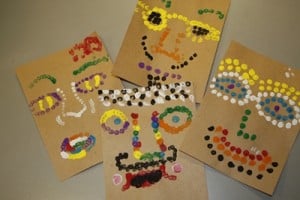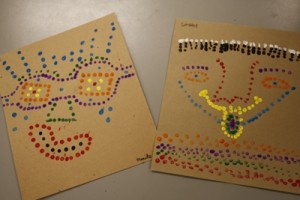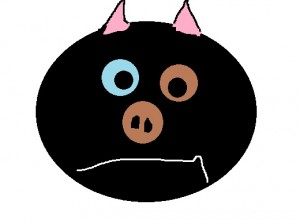Posts Tagged ‘art’
Pourquoi Stories with Second Graders
What is a pourquoi story? Ask Mrs. Garcia’s second graders and they’ll be able to tell you that it is a type of story that tells why something is the way it is. In fact, pourquoi means why in French. Rudyard Kipling’s Just So Stories is a classic work of this genre. Do you remember . . .?
- “How the Camel got His Hump” or
- “How the Leopard got His Spots”
Many cultures have pourquoi tales that have been passed down through the ages. In a collaborative effort with technology and art, Mrs. Garcia’s students explored some of these stories using the “making smaller circles” principle.
Josh Waitzkin, an eight-time National Chess Champion in his youth, attributes his success to learning techniques he developed to bring his mind and body to peak performance. In The Art of Learning, Waitzkin reveals his self-study to define techniques to maximize student achievement. One of those techniques he calls “making smaller circles.”
In Mrs. Garcia’s homeroom class, students practiced how to “zoom in” on pourquoi stories’ problems, blocks, and outcomes.
In Mrs. Black’s art class, students focused on an aspect of a subject in the story to create artwork showcasing that “zoomed in” part.
Using technology, students created and recorded a class ePub book with the Book Creator app.
Using PowerPoint and an image from Pics4Learning I created a zoomed-in version of a zebra using the theme of “making smaller circles.” This became the book cover for the ebook.
Mrs. Garcia, Mrs. Black, and I hope you enjoy the students’ view of pourquoi stories.
Link to the class book:
Pourquoi Stories: Making Smaller Circles by Mrs. Garcia’s Second Grade Class
Directions to download book to your iOS device (iPad, iPhone, etc):
- You will need the iBooks app (free) installed on your iOS device.
- Click on the book link above (while on your iOS device).
- Tap on the download button.
- Choose Open in . . . and then choose Open in iBooks
- The book is now in iBooks on your iOS device.
Directions to read the ePub book on a computer:
- You must use Google Chrome as your browser so that you can download the Readium app. The app will not work on any other browser.
- Instructions on Reading ePub Books with the Google Chrome Readium App
Celebrating International Dot Day 2012
What a fun day (and week) we have had celebrating International Dot Day! Music, art, library, and computer classes participated along with a couple of homeroom teachers. Every K-4 student received a certificate and a Dot candy (which was excitedly accepted!!). Here are just a few of the highlights.
Melissa Black, our creative art instructor, had fourth graders use Pointillism to make their mark on Dot Day. They loved using a variety of colors and tiny dots to make their paintings. First, second, and third graders chose a paper dot that was glued to drawing paper. Mrs. Black told them to use that dot as part of a bigger picture. Not everyone finished but I was amazed at how creative the students were!
Here’s what Judy Holloway wrote about music classes. “We are doing Sound Dots in music. As part of learning rhythmic patterns and melodic patterns, students write what they perform on instruments; sometimes called rhythmic or melodic dictation. Third graders made colorful rhythmic patterns and second grade wrote Do Re Mi on staff paper. First grade will take colored markers and respond to music that is staccato (dots!) and legato by drawing designs on the whiteboard.” I was able to visit a second grade class (Mrs. Shapard’s group) as they played a variety of instruments and sang a dot song that had been written by another class.
Making Music with Dots from Trinity Valley School on Vimeo.
Jane Cooper’s 2nd grade class “dotted” the equator and prime meridian on their international maps as they talked about latitude, longitude, and other map skills. Allison Shapard’s 2nd grade class used brightly colored dots to discuss arrays in math.
In the computer lab, the students are using Paint for Windows 7 to see where their dot takes them. I first asked, “Who thinks you are an artist.” Almost all first and second graders raised their hands. As we moved to third and fourth grades, fewer hands went up. That was interesting! Once we started talking about different types of “artists” the children realized the term could cover all kinds of areas – music, photography, sports, even lego-building!
Next, we read The Dot (the big screen, interative version – I highly recommend this one!) then brainstormed what a dot could be with lots of creative answers thrown out. Then the creativity began! Very few finished so we’ll continue next week. I was absolutely amazed at the drawings!












